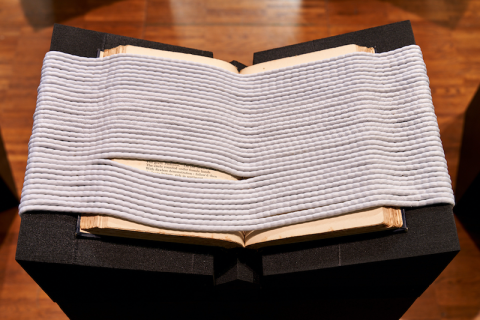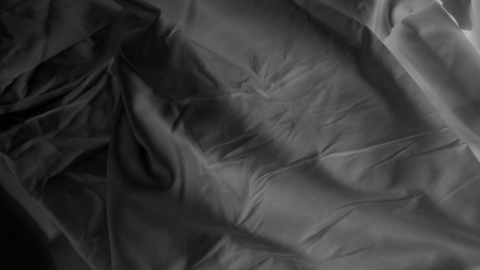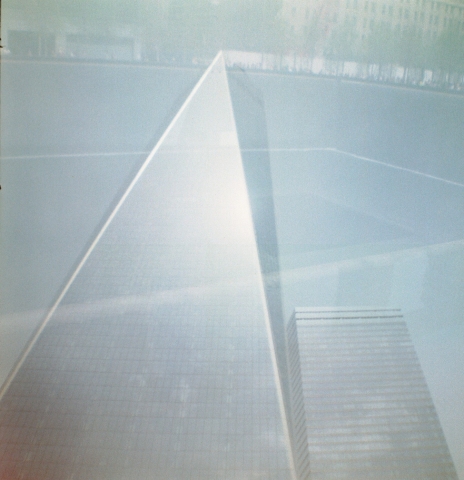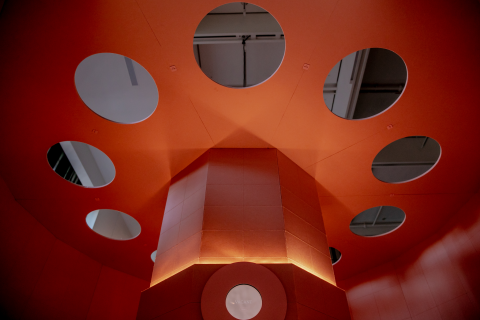Editorial
The media-rich expositions that we publish have proven very successful in articulating artistic practice as research. They allow their creators to break open the often hierarchical relationship between media and text as well as the dominant linear structure of academic writing, bringing artistic form into play at the site of research publication and dissemination. At the same time, such expositions are not only resource heavy (both in terms of internet connection and computing power), they are also so little standardized that readers who need assistance to access websites through additional software (such as text to speech conversion, colour and contrast adjustments, navigation support etc.) find it difficult to interact.1 The risk is that expositions, while including artistic materials and modes of making, also exclude parts of their potential audience for reasons of accessibility.
From this issue onwards, the expositions that JAR publishes will feature additional, accessible pages, which can be opened both from the JAR website as well as from within each exposition using the built-in contents menu and the new ‘switch to’ menu item. Those accessible pages are linear, text-only derivatives of original expositions, supplemented by additional hyperlinked descriptive sections. The aim is that mental images, affect and, more generally, sense could be stimulated by literary and poetic means even if the source materials are lacking or not available at a given point in time. This approach raises a number of complex technical, conceptual and artistic questions, which have delayed the introduction of accessible pages for some time. I want to stress, though, that on all levels this is still a work-in-progress for which we would be more than happy to receive suggestions, feedback or ideas through our web form not least by people who are dependent on such pages. How can they be improved?
If we talk about original and derivative pages, we should keep in mind that from the outset, in general, expositions of the kind we have been publishing have been considered derivative and not original.2 In most cases, even media rich expositions will only allow for a very limited and materially poor experience of artistic work: a digital reproduction is not the same as a painting, a stereo recording not the same as a concert performance, a website no replacement for social, embodied and interactive art experiences etc. JAR’s position in the field was not that artistic practice could be represented in some form of digital copy; but rather, that through expositions material traces could be reassembled, to articulate art’s epistemic contribution. This is the key reason why media-rich expositions are important and really have proven a game changer.
At the same time – and we have to say this (self-)critically – media objects don’t always do the work they appear to do, or we find it difficult to pay attention and sense what is happening, that is, how an exposition articulates practice as research. This does not mean that such contributions are not valuable to JAR and its community; it only means that expositions can be more or less ‘expositional’ and that expositionality is hard to grasp.3 In addition, and despite our best efforts, over the years, a ‘style’ has developed that seems to suggest certain distributions of media and text elements on a web page are advantageous regardless of their expositional qualities.4 It could be argued that as something akin to a ‘style’ may have established itself, expositions have become ‘original’ in their own right.
While not introduced for this purpose, accessible pages challenge this situation since each submission will now be there at least twice, as ‘original’ and ‘accessible’ pages putting pressure on ‘original’ pages as the only form expositionality can take. From the practical perspective of the author (or editor) the problem would be experienced as such: as the textual part is extracted and placed in a linear form, what additional elements are needed to make this derivative work within the tight constraints of accessible pages? For the current issue, we experimented with grey boxes with hyperlinks to media elements on the original page supported by descriptive texts, but in the future the work required may not stop at the introduction of further framing devices.5 In our short experience with ‘accessible pages’, it has already become clear that the rich-media pages can be dearly missed (and that this can be stated), but more importantly that in making up for this deficit the descriptive texts can add additional value. This starts with a more specific location of a media object in the flow of text potentially creating a clearer sense of interruption; and it can continue with descriptions that explain and make tangible, on a different level, how expositionality is enacted in the exposition. This can include what usually are considered the more subjective parts of experience, such as how we see x in relation to y guiding a reader through a particular way of experiencing an exposition. Here, then, we have the same building blocks that render all expositions derivatives: that they manage to articulate what is absent, be it studio practice on a rich-media web page or the rich-media web page on an accessible page.
From experience I know already how enriching and productive expositions can be for the practice of art and research. However, when working on the accessible pages of this issue, I was surprised to experience how a few sentences of description can change my understanding of an element, clarify intention and place a focus. Being so familiar with all expositions in this issue in all forms, it is perhaps difficult to grasp how accessible pages work without any media support – and I am sure improvements are possible – but I would stress that all derivatives have their own affordances, and one never fully replaces the other. We should not only accept that there may be a tension between types of pages in an exposition but also that, when taken together, a much fuller understanding can emerge relieving to some degree the ‘original’ pages from the status they have come to have. In this sense, both ‘original’ and ‘accessible’ pages are co-original and co-derivative at the same time, which in terms of exposition rings true for all fields of practice.6
Finally, I would like to express my gratitude to all authors of this issue. We decided to go ahead with accessible pages very late in the process requesting yet another, unexpected layer of work. I was touched by how understanding everybody was in seeing the needs for this initiative and also how pragmatic all issues could be solved. My thanks also go to Casper and the RC team as well as to SAR for their help and support. Going forward, we will integrate accessible pages much earlier in the revision process, but not require those to be created by authors, in particular not at the point of submission. We also don’t envision requiring peer reviewers to assess accessible pages.
Michael Schwab
Editor-in-Chief
- 1As it currently stands, accessible pages offer a compromise solution for at least three different kinds of use cases:
1. In large parts of the world people connect to the internet mainly through their mobile phones and not through desktop computers; implied here are small screens, low bandwidth and expensive data transmission;
2. Many people find complex web pages difficult to operate, in particular if they need specialist soft- or hardware support, but also if they require a more focused or selective approach to screen reading including the possibility to print materials;
3. Beyond individuals, library and indexing services find it difficult to access, assess and archive media-rich websites; not being included in e.g. the web of science or scopus for such formal reasons devalues the work of artistic researchers. - 2For a more in-depth introduction to expositionality see: Schwab, Michael. 2019. “Expositionality.” In Artistic Research. Charting a Field in Expansion, edited by Paulo de Assis and Lucia D’Errico, 27–45. London and New York: Rowman & Littlefield. The chapter can be downloaded from the Research Catalogue here [https://www.researchcatalogue.net/profile/show-work?work=790463]
- 3We specifically ask peer reviewers to assess the expositionality of submissions in our peer review form https://jar-online.net/sites/default/files/2023-03/JAR_Peer-Review_Form_2023.docx
- 4See JAR’s last editorial for a discussion of this: https://jar-online.net/en/issues/31
- 5See my JAR28 editorial for more on the notion of ‘framing device’ in expositions. https://jar-online.net/en/issues/28
- 6We may also understand multi-lingual expositions as engaging in a play of derivatives; since both are published together, it becomes impossible to differentiate the original from its derivative (translation).





